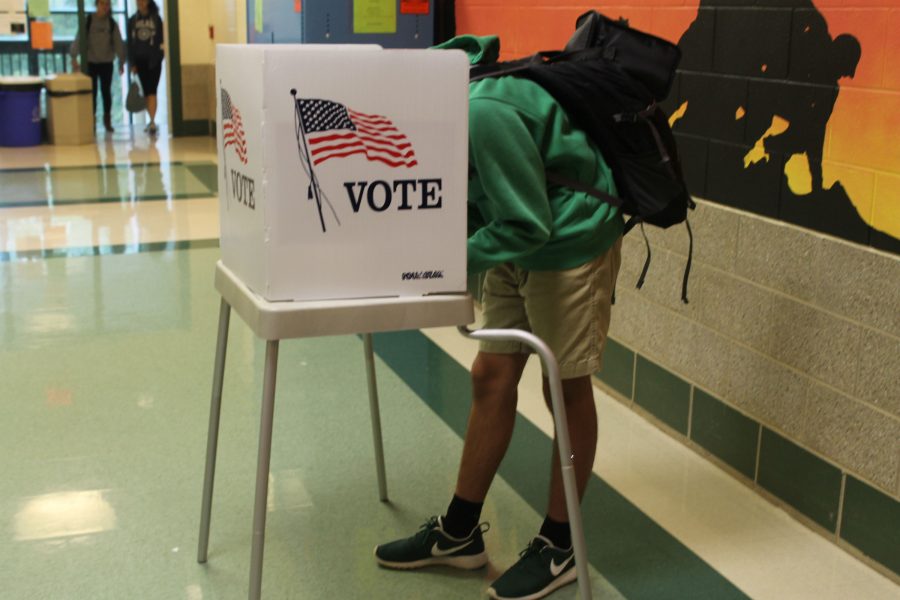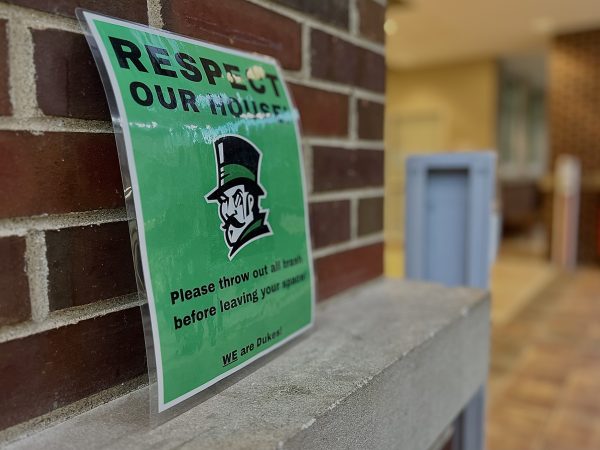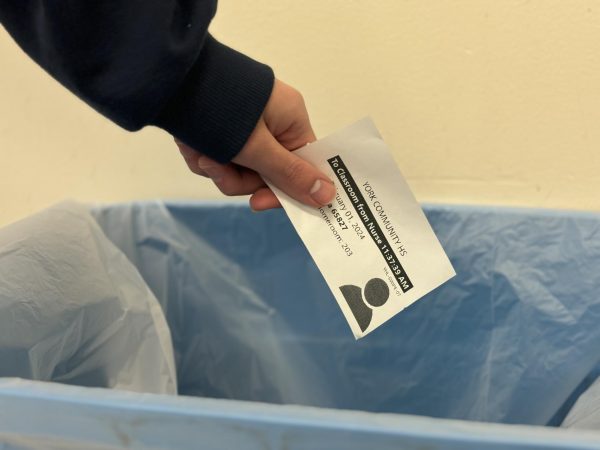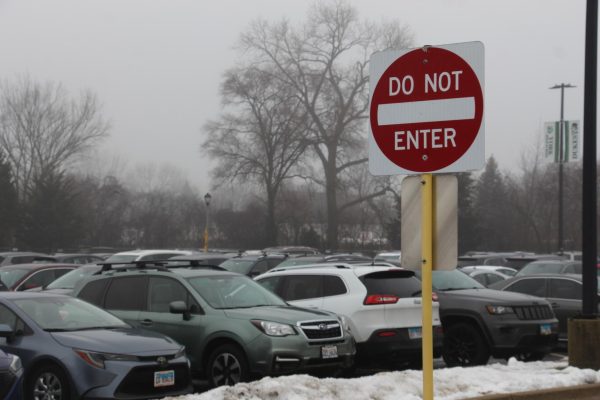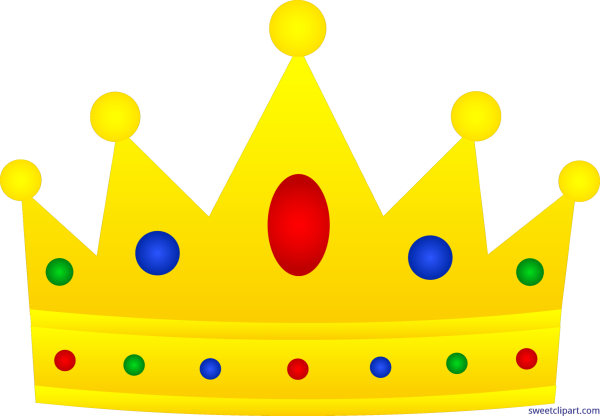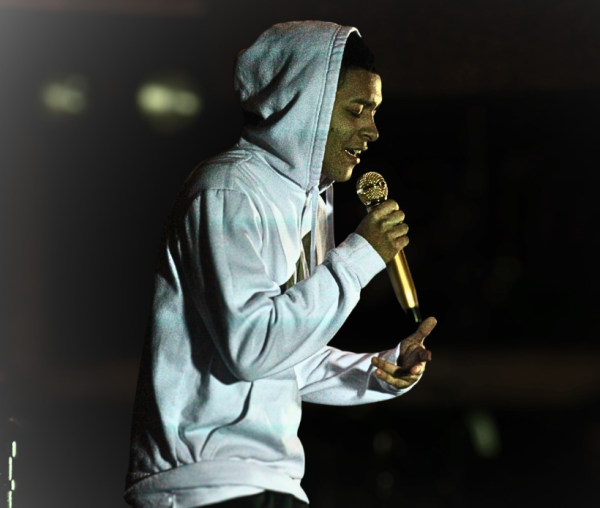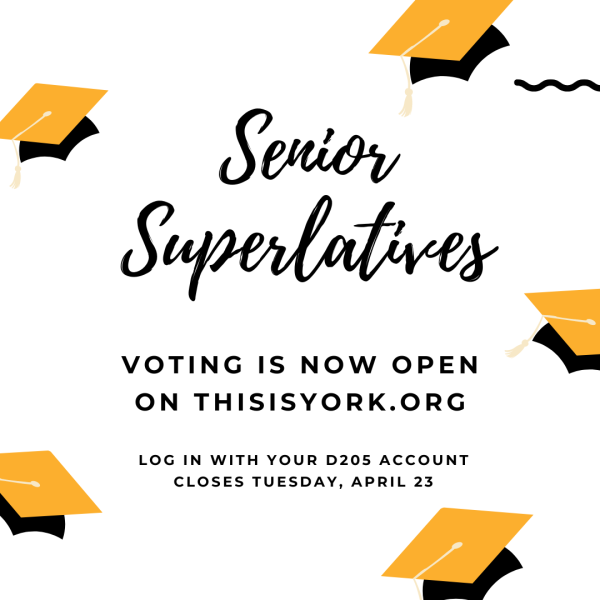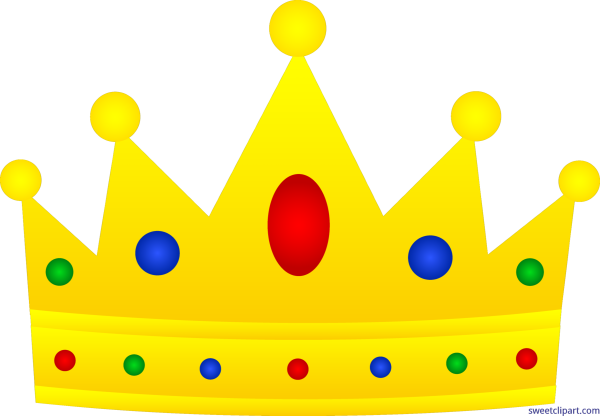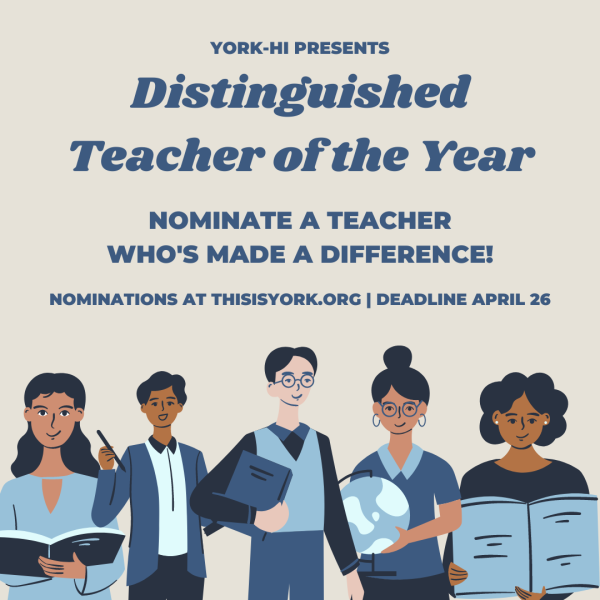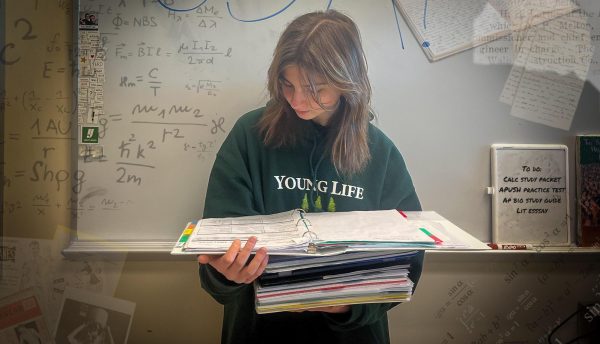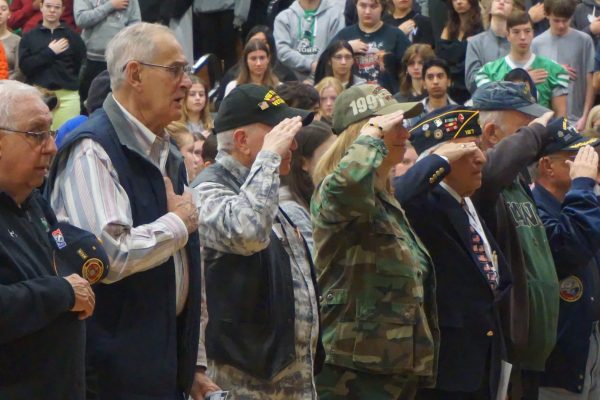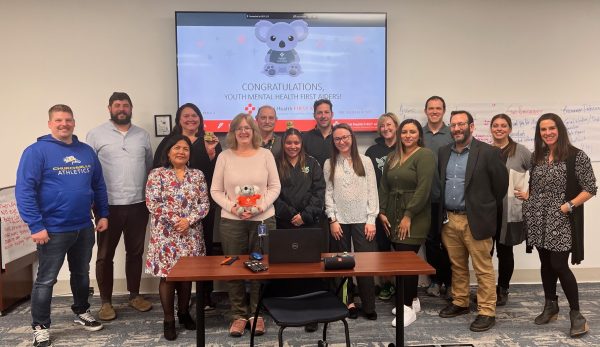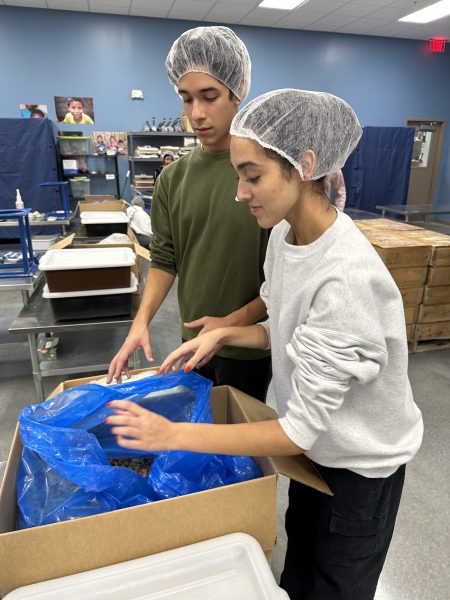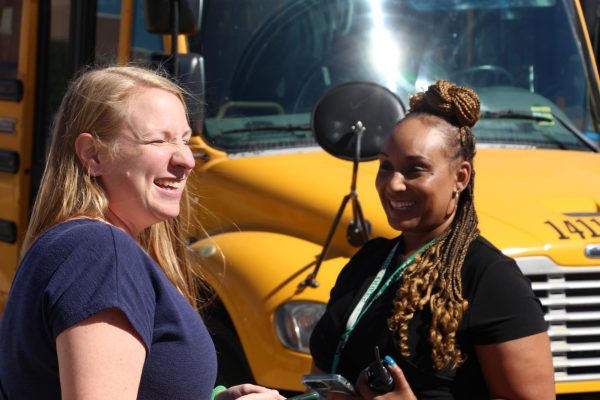Students participate in democratic process; elect Clinton as President in York’s mock election
On Thurs., Oct. 6, over 2,000 students voted in a mock election, which was facilitated by Department of Social Studies along with volunteers from the League of Women Voters.
Throughout the day, teachers brought their classes, mostly social studies and English, to the polls located on the second floor of the Academic Building to cast their vote.
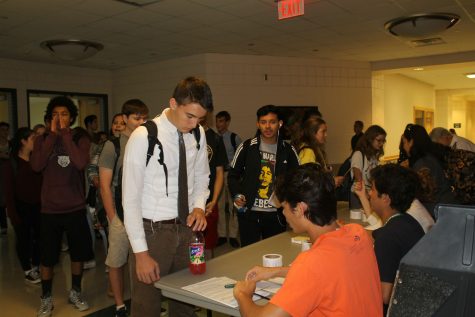
The results are in.
On the presidential ticket, Hilary Clinton won a hotly contested race. Students cast 827 ballots for Clinton, while 645 were cast for Donald Trump. York students have more than a little bit of interest in Independent candidates, with Gary Johnson earning 271 votes and Jill Stein earning 103.
The U.S. Senate seat was also a close race. Mark Kirk won, with 842 votes to Tammy Duckworth’s 791. Mike Quigley, winner of the 5th Congressional District vote, had the biggest margin of victory, with 922 votes to 580 for Vince Kolber. He’s visited York a few times the last couple of years, so maybe that left an impression on these students.
York students were overwhelmingly in favor of the Safe Roads amendment, with 1,121 voting yes and 267 voting no.
Even though yesterday’s votes are not counted in the real election, teachers believe this is an important way to create civic-minded students who will eventually participate in the democratic process.
“Future voters can still impact the outcome of elections,” said Tim Albert, social studies teacher. “They can campaign, protest, participate in social media, discuss where current voters [stand] and voice concerns about their future. Even if you are not old enough to vote, you still are a citizen and have to live with the positive and negative consequences of elections.”
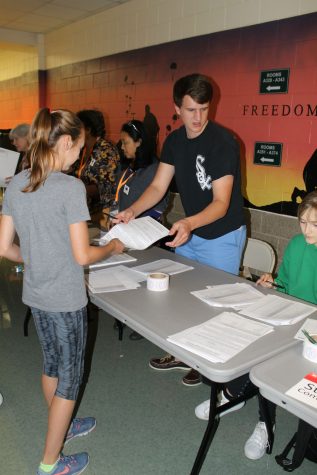
Administrators were pleased that so many York students were able to participate in the voting process.
“That’s 2000 students that were able to experience the feeling of voting,” said Mike DiNovo, social studies chair. “That’s 2000 students who will find actual polling places less mysterious. I think this was a big win for civic action, and students learned a big message about their ability to affect change.”
Student also enjoyed getting a feel for the process.
“I didn’t know what to expect,” said Antonio Gutierrez, sophomore. “I saw the blinders and enjoyed the fact that it ensured the privacy of who you’re voting for.”
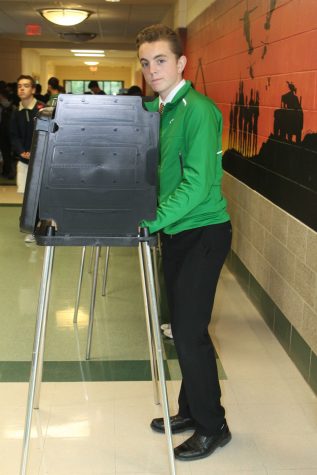
In addition to privacy, students appreciated how the process felt authentic.
“I liked the papers because it looked like a real ballot,” said Joe Orrico, sophomore. “The three [presidential] candidates were written on it. I helped me envision what a real voting process would be like.”
Overall the mock election provided the York community an opportunity to experience the importance of the democratic process.
“For students who do not yet vote, the mock election makes voting tangible which may very well increase the likelihood they will both pay attention to politics and vote themselves when the opportunity presents itself,” Albert said. “Additionally, it provides a focal point for discussion in class about current issues, candidates, opinions, and bias in the media.”


